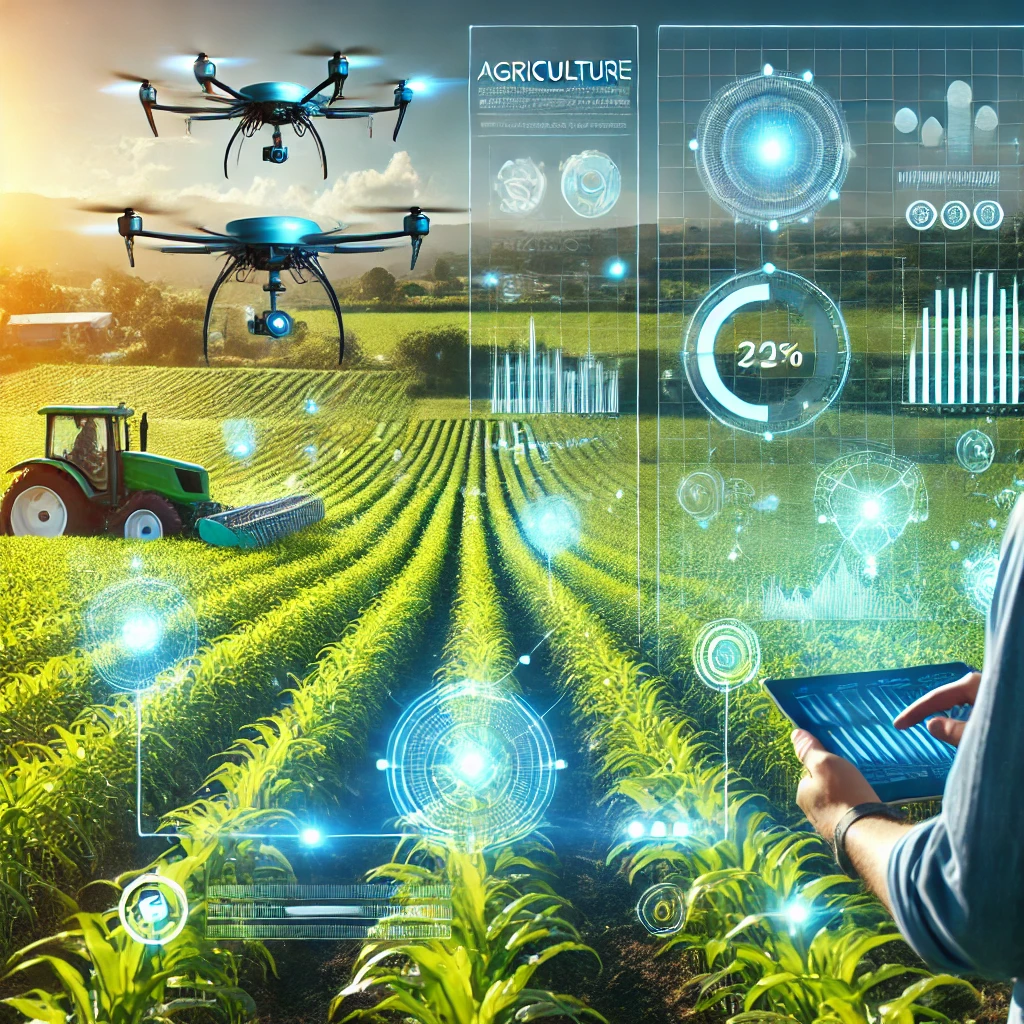The agricultural sector is undergoing a digital transformation, with Artificial General Intelligence (AGI) emerging as a groundbreaking tool to empower farmers. By predicting crop yields and optimizing agricultural practices, AGI holds the potential to address global food security challenges while enhancing sustainability and profitability in farming.
Predicting Crop Yields
Accurate crop yield predictions are vital for farmers, policymakers, and the global food supply chain. AGI systems, with their capacity to analyze massive datasets and learn complex patterns, can offer highly accurate predictions by leveraging:
- Satellite and Drone Imagery
AGI can analyze high-resolution satellite and drone imagery to monitor crop health, soil quality, and weather impacts. By identifying early signs of stress or disease, AGI provides farmers with actionable insights to mitigate potential yield losses. - Climate Data Integration
Advanced AGI models can process historical and real-time climate data to predict how weather patterns like rainfall, temperature, and humidity will impact crop growth. This enables farmers to plan better for planting, irrigation, and harvesting. - Soil Analysis
Using sensor data and AI-driven soil mapping, AGI evaluates soil fertility, moisture levels, and nutrient content. These insights help determine the best crops for specific conditions and forecast their productivity. - Market Trends and Economics
Beyond biology and climate, AGI can incorporate market data to predict the economic feasibility of planting particular crops, aligning yield predictions with profitability forecasts.
Optimizing Agricultural Practices
Beyond predictions, AGI is a powerful tool for enhancing farming techniques. It provides actionable recommendations to improve efficiency and sustainability in several key areas:
- Precision Agriculture
AGI can guide precision farming practices, such as the optimal application of water, fertilizers, and pesticides. This reduces waste, lowers costs, and minimizes environmental impacts while boosting productivity. - Crop Rotation and Planting Schedules
By analyzing historical yields, soil health, and market demand, AGI can recommend crop rotation strategies and ideal planting schedules to maintain soil fertility and maximize harvests. - Integrated Pest Management (IPM)
AGI models can detect patterns of pest activity through image recognition and environmental data analysis. Early detection allows for targeted interventions, reducing crop damage and dependency on chemical pesticides. - Irrigation Management
Using data from weather forecasts, soil moisture sensors, and crop water requirements, AGI can optimize irrigation schedules. This conserves water resources and ensures crops receive adequate hydration at critical growth stages. - Supply Chain Optimization
AGI facilitates seamless integration with supply chain management, helping farmers decide the best times to harvest, store, and transport their produce. This minimizes spoilage and maximizes market value.
Empowering Farmers with AGI
The application of AGI in agriculture is not just about technology but also about empowering farmers with actionable insights. By making complex data understandable and accessible, AGI enables farmers to make informed decisions, reduce risks, and adapt to changing conditions.
Benefits of AGI in Agriculture
- Increased Efficiency: Automating data analysis saves time and reduces manual labor.
- Enhanced Sustainability: Optimized resource use and eco-friendly practices reduce environmental footprints.
- Better Risk Management: Predictive analytics prepare farmers for challenges like droughts, floods, or pest outbreaks.
- Higher Profitability: Improved yields and cost savings translate to greater economic returns.
Challenges and the Way Forward
Despite its immense potential, implementing AGI in agriculture faces challenges such as data availability, infrastructure limitations, and the need for farmer training. Addressing these barriers requires collaboration between governments, tech companies, and agricultural organizations to ensure that AGI benefits all, including smallholder farmers in remote areas.
Conclusion
AGI is poised to revolutionize agriculture by enabling precision, efficiency, and sustainability in farming. By harnessing its power, farmers can predict crop yields more accurately and adopt smarter agricultural practices, paving the way for a future of resilient and productive farming. With AGI as a trusted ally, agriculture can thrive in the face of growing global challenges, ensuring food security for generations to come.
[SEO optimized]


